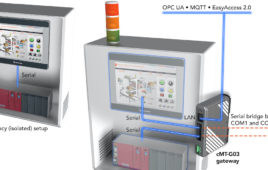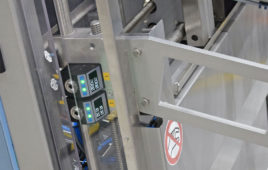Going into 2016, many experts and (surveyed) consumers believe the smartphone “fad” will die out over the next five years. For many people (mainly millennials) this is a scenario so inconceivable, just thinking about life without smartphones induces bouts of panic and dread. Sadly, it’s just the nature of any industry for products to shine in the spotlight for a period of time before losing their appeal. It’s happened to gadgets like beepers, VCRs, and walkmen. I think we all quickly forget how you once could find these electronics anywhere at one point, and many people around that time couldn’t imagine life without these technologies.
History shows us that nothing truly lasts forever, and this will certainly be the case with smartphone popularity. While the transition won’t occur overnight, the technologies that are poised to replace smartphones are already in development, some of which you might already recognize.
1. Artificial Intelligence
Abbreviated as AI, most technologies of this brand currently come in the form of home automation hubs and virtual assistants like Amazon’s Alexa or Apple’s Siri. All of the major corporate entities in the tech industry (Facebook, Google, Amazon, Samsung, etc.) already have or are currently developing virtual assistants that are voice activated.
According to a group of smartphone consumers that were surveyed, many participants believe AI will assume routine activities like web browsing, sending messages, booking trips and reservations, along with eventually possessing the ability to hold conversations with human beings. Since these AI devices are activated simply by the sound of your voice, its practical nature resonates strongly among consumers, since the technology doesn’t require you to look at a screen and frees you up to multitask more efficiently.
2. Virtual Reality
While this brand of technology is still in its infancy, virtual reality (VR) has left a profound impression on the tech industry. VR currently has many flaws, like its lack of authentic interactive features and performance quality. The tech industry’s major corporate entities are actively working on developing augmented VR headsets that will reportedly be capable of projecting 3D images right into your eyes.
Augmented reality is capable of replacing not just smartphones, but desktop/laptop computers, television, and anything with a screen. This would mitigate the significance of the aforementioned electronics, since augmented reality would contain all the content and images those forms of technology contain, all in one device.
Using augmented reality, computers will essentially “highjack” your senses more than they currently do by using technology to intermediate sight and vision. Tech companies hope this will result in fewer technological distractions and more balance, while intertwining real life and technology more seamlessly.
3. Neuralinks
This concept is definitely farther away from going mainstream than the two previous technologies listed. Currently in development by Tesla and SpaceX CEO Elon Musk, a neuralink might sound like something purely out of science fiction as this brand of technology intends on installing computers into people’s brains using what’s described as a “neural lace.” This electronic chip would be embedded in a person’s brain, and bridge it to a computer, literally binding man and machine in this concept.
A neuralink does, in some ways, combine the technologies previously cited in this piece. Smartphones and AI give us direct access to information, while augmented reality puts everything in front of us when needed. Neuralink does both, and in one device. As previously mentioned, this idea has always been relegated to the realm of science fiction. This technology does have its share of concerns however, since we don’t truly know what the world would be like if this technology was actually applied and attained mainstream popularity like today’s iPhones.
Filed Under: Virtual reality, M2M (machine to machine)




